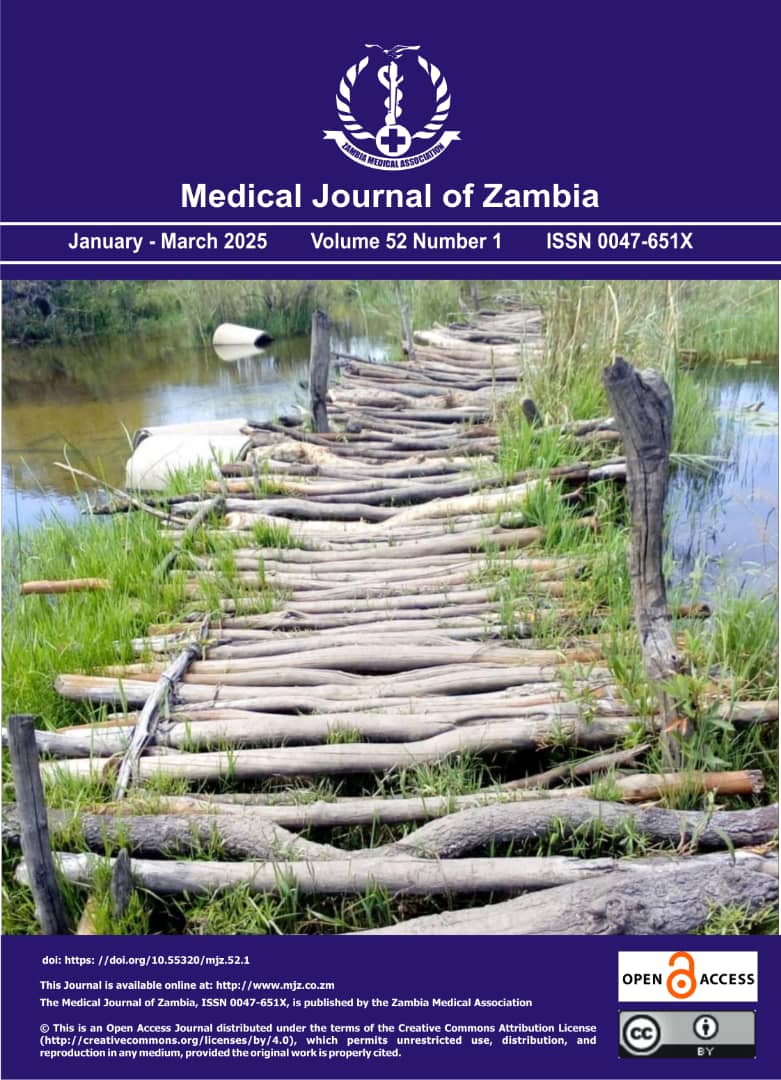GOUT ARTHRITIS IN ZAMBIA – CHALLENGES AND NEGLECT OF A DISEASE: A CASE SERIES AND TREATMENT GUIDELINES REVIEW.
DOI:
https://doi.org/10.55320/mjz.52.1.595Keywords:
Arthropathy, Arthritis, Gout, Tophi, Uric acid, Urate lowering therapyAbstract
Background:Gouty arthritis remains an orphaned disease worldwide, with very little research into newer treatments, and oftentimes patient care is suboptimal. Majority gout patients are males older than 40 years, while women and juveniles present with atypical arthritis. The aim is to highlight challenges faced by gout patients in Zambia and give insights on treatment guidelines.
Methods:Six case vignette series of gout patients seen at three rheumatology clinics in Zambia.
Results:Case 1a & 1b: 54 Year recommended for medical discharge and a 37 year old miner having challenges with work. Both gentlemen were not on regular gout therapy.
Case 2: 68 year old man, cattle header, obese, chronic tophaceous gout, flexion deformities of fingers, knee synovitis, presented with sepsis and acute kidney injury.
Case 3: 72 year old gentleman, suspected myeloproliferative disorder, presented with unexplained weight loss, wrist deformities, swollen knees and hand joints. White cell count 74,000/µL, Uric acid 678 µmol/L.
Case 4: 57 year old lady, menopause at 43 years post bilateral hystero-salpingo-oophorectomy. Tophi and swollen metatarsophalangeal joints both feet. Off duty most days of the month. Hypertensive and takes loop diuretic. Serum uric acid of 554 µmol/L.
Case 5: 17 year old male, missed three weeks of school due to recurrent right knee swelling and flares of right big toe metatarsophalangeal joint since age of 13.
Conclusion:Male patients with non-first-metatarsophalangeal arthritis, women and juveniles are less likely to receive timely diagnosis. There is need for strengthened training and improved availability of treatment guidelines for gout in Zambia.
Downloads
Published
Issue
Section
License
Copyright (c) 2025 Medical Journal of Zambia

This work is licensed under a Creative Commons Attribution-NonCommercial 4.0 International License.









